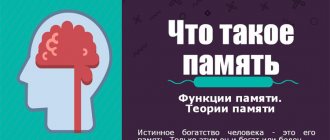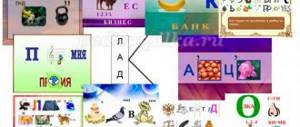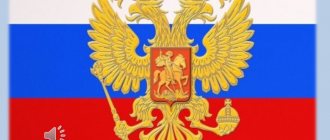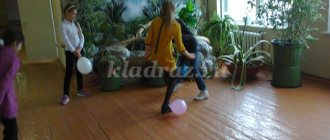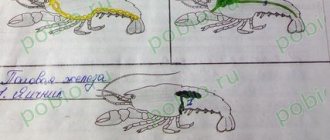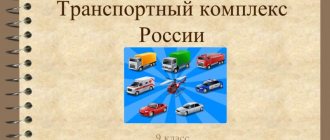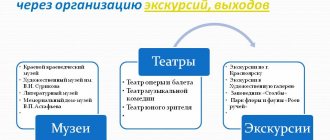Slide number 12
- All classes and all classes of the population are subject to conscription;
- for the nobles it is a personal and universal conscription, for the tax-paying classes it is communal, i.e. the government made its demands not on the individual, but on the society, indicating only the number of recruits to be surrendered, aged from 20 to 35 years, and leaving it to the societies themselves determine who should be surrendered and on what grounds;
- service life - lifelong;
- the size of the duty, recruiting time and layout order are determined specifically before each recruitment.
Class hour "Days of military glory"
«DAYS OF MILITARY GLORY
RUSSIA – DAYS OF GLORIOUS VICTORIES THAT PLAYED THE DECISIVE
ROLE IN THE HISTORY OF RUSSIA"
TOPIC: “ DAYS OF MILITARY GLORY OF RUSSIA - DAYS OF GLORIOUS
VICTORIES THAT PLAYED A DECISIVE
ROLE
IN THE HISTORY OF RUSSIA"
Target:
creating conditions for the formation of patriotic feelings in students, a sense of pride in their homeland
Tasks:
—
repetition and consolidation of students’ knowledge about memorable dates in Russia.
- development of mental operations and memory, the ability to analyze events and evaluate them.
- developing a sense of pride and respect for the historical past of the Motherland, nurturing independence, forming certain moral, aesthetic and ideological attitudes, nurturing communication and cooperation.
Lesson type:
lesson - generalization
Lesson format:
lesson-game “Intellectual Marathon”.
Material and technical support:
interactive complex, lesson presentation.
“Black box” (for stage 5 of the intellectual marathon) is a box containing drawings of chain mail, a ship, a tank from the Great Patriotic War, and the Battle Banner of a military unit.
Route sheet for each team.
Feedback cards are red, orange and green according to the number of students.
Lesson plan:
- Teacher's opening speech.
- Explanation of the rules of the intellectual marathon.
- Warm up.
- Marathon in stages.
- Summing up and rewarding the best.
Feedback (reflection) – assessment of students’ impressions of the lesson.
“Days of Military Glory” is written on the board.
and the epigraph:
“There is a memory that will never be forgotten, And a glory that will never end...”
On the board -
route sheets for each team.
2. Feedback cards:
Red: “
I am satisfied with the lesson, it was useful for me. I worked well in the lesson, received a well-deserved grade, understood everything that was said and what happened in the lesson”;
of blue color:
“The lesson was interesting and I took an active part in it. The lesson was useful to me to a certain extent. I answered from the spot and managed to complete a number of tasks”;
Green colour:
“I received little benefit from the lesson; I didn’t really understand what was going on. I don't really need it. I didn’t understand the homework and wasn’t prepared for the answer in class.”
During the classes.
(Against the background of music, students read the poem “Don’t go to Rus'”):
1 student:
“Don’t go to Rus'!” — Monomakh addressed his neighbors. “Whoever comes to us with a sword will die by the sword!” - Said the brave Prince Alexander. And in an eternally unfading victory, he proved the correctness of his words with a fair sword. How many plowmen have you lost, Russia? How many best sons have you given to your bloody enemies?
2nd student:
“Don’t go to Rus'!” - You asked for one thing, You didn’t address your friends, But only your enemies. “Don’t go to Rus'!” “But the enemies advanced bloodily... And then our native country gave us, along with a formidable weapon, the fields of our glory, our great ancestors, holy names for us...”
1. Teacher:
Today we will conduct a lesson - a generalization on the topic: “DAYS OF MILITARY GLORY OF RUSSIA - DAYS OF GLORIOUS VICTORIES THAT PLAYED A DECISIVE ROLE IN THE HISTORY OF RUSSIA.” The lesson will be held in the form of the game “Intellectual Marathon”. We have created three teams of students.
Your task today is to show your knowledge by briefly recalling the days of Russia’s military glory.
Each nation has its own treasured pages of history, its own heroic names that will never be forgotten. The history of our country is forever inscribed with the days of glorious victories, in which Russian troops earned honor, the respect of their contemporaries and the grateful memory of their descendants. The images of heroes, like stars in the sky, illuminate the historical path of our people and serve for posterity as examples of sacrificial service to our Fatherland.
Many young Russians want to be like these beacons of valor and continue their work and military traditions.
2.
Explanation of the rules of the intellectual marathon.
Today in class you, as future defenders of our Fatherland, will make an intellectual marathon into the depths of our history. Our intellectual marathon is held under the motto (read the inscription on the board): “ There is a memory that will never be forgotten, and a glory that will never end...”.
It is divided into stages, each of which is reflected in
route sheet for each team.
Questions and answers are scored using a point system. Along with marks for answers, during the marathon, everyone can earn 0.5 points for each addition or correction. The presenter will record your answers in the route sheets of the three teams in the columns: plus - complete answer, dash - incomplete, tick - addition or correction. We give answers clearly and completely. At the end of the lesson we summarize.
3.
Warm up.
Let's do a warm-up.
Question:
What holiday does our country celebrate every year in a row on November 4th?
What historical event is it connected with? Answer. Day of National Unity - the liberation of Moscow by the forces of the people's militia under the leadership of Kuzma Minin and Dmitry Pozharsky from the Polish invaders in 1612.
4. So, we begin the “ Intellectual Marathon”.
Name the outstanding commander who will be discussed and tell which day of military glory it is associated with.
Task No. 1:
He decided to meet the enemy in the field.
His actions received the support of the church. Sergius of Radonezh blessed the cause and sent two of his monks, Peresvet and Oslyabya, with the Russian regiments. They began to call him in documents the Great Prince of All Rus', the Russian Tsar. Score –
2 points.
Answer . Prince Dmitry Donskoy, September 21, 1380 - Battle of Kulikovo.
Task No. 2:
At the age of 12 he enlisted in the Semenovsky Life Guards Regiment.
Passed all military ranks. He fought brilliantly against the Turks and the French. Developed the textbook “The Science of Winning.” The essence of his tactics: eye, speed, pressure. Score –
3 points.
Answer. A.V. Suvorov, December 24, 1790 - the day of the capture of the Turkish fortress of Izmail by Russian troops under the command of A.V.
Suvorov. Answer what event the lines are dedicated to, tell about it.
Task
No. 3:
“Moscow, Moscow,
Sacred power, Blessing, believing and loving, We are for you - out of duty, and by right, And out of love - we fight for you!”
Grade -
2 points.
Answer . December 5, 1941
- the day of the start of the counteroffensive of Soviet troops against Nazi troops in the battle of Moscow. On the night of December 5-6, Red Army units launched a powerful offensive along the entire front.
As a result of the counter-offensive of our troops, which ended in early January 1942, the enemy was driven back 100-250 km from the walls of Moscow.
Task No. 4:
name the author of the words read and the event about which they were written or spoken.
“The Soviet strategy turned out to be... superior to ours... The best proof of this is the outcome of the battle on the Volga, as a result of which I was captured.”
Grade -
2 points.
Answer:
F. Paulus, Field Marshal General, commander of the 6th German Army, about the Battle of Stalingrad 1942-1943.
During January 1943, the encircled German troops were defeated.
On January 31, Field Marshal Paulus and his staff surrendered. On February 2, German resistance ceased. During the operation, 22 divisions and 160 separate enemy units were defeated. 91 thousand people were captured, including more than 2,500 officers.
Task No. 5:
“The Battle of Stalingrad was a huge school of victories for our troops.”
Grade -
2 points.
Answer:
G.K. Zhukov, Marshal of the Soviet Union about the Battle of Stalingrad July 17, 1942 - February 2, 1943.
The Battle of Stalingrad is the largest battle of World War II. It began on July 17, 1942. German troops advanced 70 km. On August 23, German tanks broke into Stalingrad, and the bombing of the city began, which lasted several days. During January 1943, the encircled German troops were defeated. Task No. 6:
List the main conquerors whose invasions Russian troops had to repel throughout the history of Russia.
Grade -
2 points.
Answer :
Mongol-Tatars;
German crusader knights; Poles; Swedes; Turks; French troops of Napoleon; Austro-Hungarian and German troops; Hitler's Germany. Task No. 7:
“After the salvo, the fireworks thunder. Rockets in the hot air Bloom with variegated flowers. And the Leningraders are quietly crying.
7 Their joy is great, but the pain spoke and broke through: Half of Leningrad did not rise to the festive fireworks with you.”
Grade -
3 points.
Answer.
27
, 1944 - the day the blockade of Leningrad was lifted.
In August 1941, German troops launched an attack on Leningrad. On August 30, the city was surrounded. The blockade of the city lasted 880 days. The victory at Leningrad was won at a high price. During the harsh days of the blockade, 641,803 Leningraders died - men, women, children.
Teacher:
Wars and armed conflicts bring with them great loss of life and great destruction. During war, unfortunately, civilians, including women and children, also die along with the military.
In modern conditions, terrorism poses a serious threat to many countries of the world, including the Russian Federation. In global legal practice, this type of threat to life safety is considered a most dangerous crime. You need to be able to distinguish between the concepts of methods of conducting military operations and terrorism, it is important to understand their difference.
Question:
Think and tell me, what is the difference between a warrior (soldier) and a terrorist?
Grade:
3 points.
Answer:
When a person, with a bunch of grenades, throws himself under the tracks of a tank or combat vehicle, then he can be called
a warrior (soldier ),
because in war they destroy the enemy, but if this person, with a bunch of grenades, enters a cinema or a cafe to kill civilians people, then he is
a terrorist.
Student:
In most cases, when a terrorist act is committed, the target of terror is the civilian population.
Currently, the most typical actions of terrorists are organizing explosions in crowded places and residential buildings. Timely detection of explosive objects will save the lives of yourself and other people. Unfortunately, explosions on the street, in the subway, in the yard, in the house and in the car have become part of our everyday life. Terrorists are very resourceful and have a rich arsenal - from improvised explosive devices to grenades and mines used in the Armed Forces.
Teacher:
What do you think explosive devices could be hidden in?
Student:
an explosive device can be disguised in a beer can, a pack of cigarettes, a toy, a bottle, it can be in a piece of pipe, a milk carton, in any package or box, in a mobile phone, etc.
For today's lesson, homework for groups: prepare anti-terrorism security rules (cards).
Rating: 5 points.
Team task No. 1 :
What signs can be used to judge that there is a danger of explosion.
Answer:
These could be:
- Remains of various materials atypical for the site.
- A wire or cord is stretched.
- There are wires or electrical tape hanging from under the car.
- Fresh scratches and dirt on glass, doors and other objects.
- An unfamiliar smell where there has never been one before - for example, soup seasoning (some explosives smell like that).
- Prominent areas of freshly dug or dried soil that were not there before.
- Your apartment has traces of recent renovation work (paint, plaster, etc.) that you are not aware of.
- Someone else's bag, briefcase, box or other item that happens to be near your car, house, or apartment.
If you notice an ownerless item, immediately contact a police officer or other official. Do not touch the find and do not let other people near it.
Team task No. 2:
What to do if you are attacked for the purpose of kidnapping.
Answer:
If you have been attacked for the purpose of kidnapping, you must...
- Try to make as much noise as possible to attract the attention of others and fight off attackers.
- To reduce the risk of kidnapping, the following precautions should be taken:
- know the area where you live well, its secluded areas;
- If you feel like someone is following you, turn around and check your suspicions. If these suspicions are confirmed, change the direction, pace of walking, or flee.
- Do not get into a car with strangers or unfamiliar people.
- You should categorically refuse, especially girls, from evening walks through vacant lots and construction sites.
- Never open the apartment door unless you know who is calling, especially if you are home alone.
Remember that the success of your liberation depends on your endurance and ability to navigate in a difficult environment.
Team task No. 3:
Rules of conduct in the event of being taken hostage.
Answer : If you are taken hostage, you must follow the following rules
- Do not expose yourself to unnecessary risk, try to limit any contact with criminals, do not cause aggression in them with your actions or words, especially if they are under the influence of alcohol or drugs.
- Try as much as possible to soften the hostility of criminals towards yourself by remaining flexible, calm and peaceful.
- Do not resort to extreme measures to free yourself if you were unable to escape and escape immediately during capture.
- From the moment of capture, control your actions, try to record all the actions of the criminals.
- Assess your location and don't panic. Try to remain calm even in conditions where criminals threaten you with physical harm and also try to limit your mobility.
- Use every opportunity to report (transmit information) about your location, signs of criminals, characteristics of their behavior to your relatives or law enforcement agencies.
- Do not react to the provocative actions of terrorists, do not ask them questions and try not to look them in the eyes, this may cause additional aggression towards you.
- In a vehicle seized by terrorists, stay in your place, do not move around the cabin, and try to attract less attention from criminals.
- Avoid rash actions that could endanger your life and the lives of other passengers, especially when airplanes are hijacked by terrorists.
- During the assault, do not pick up the weapons of criminals, as they may mistake you for bandits and open fire on you to kill.
Student:
In such cases there is no clear advice; the decision must be made on the spot.
Not only your life, but also the lives of the people around you (relatives, friends and acquaintances) will depend on the knowledge gained in life safety lessons, on the ability to quickly and correctly assess the situation.
Let's continue our “Intellectual Marathon”
Exercise
:
Make a chronological chain, starting with the most distant event in time:
A) The Battle of Moscow.
B) Battle of Poltava.
B) Battle on the ice.
D) Battle of Borodino.
Grade
– 4 points.
Answer:
1- Battle on the Ice
.
2- Battle of Poltava.
3-
Battle of Borodino.
4-Moscow battle. Assignment:
Answer what event the lines are dedicated to, tell about it.
“The shaft rolled loudly in the bloody darkness of the Hundredth Attack. Angry and stubborn, the soldier stood chest-deep in the ground to his death. He knew that there was no way back, He defended Stalingrad.”
Grade -
4 points.
Answer .
February 2, 1943 is the day of the defeat of the Nazi troops by Soviet troops in the Battle of Stalingrad.
The victory at Leningrad was won at a high price. During the harsh days of the blockade, 641,803 Leningraders died - men, women, children.
Exercise:
He remained forever in people's memory.
Artist L.D. Korin painted the picture, S.S. Prokofiev dedicated a cantata to him, K. Simonov - a poem, S.M. Eisenstein - film. In his honor, an order was established in Russia in 1725. They said about him: “This is a dangerous, strong, smart enemy...” Score –
5 points.
Answer . Prince Alexander Nevsky, April 18, 1242 - the day of the victory of Russian soldiers over German knights on Lake Peipsi.
(Battle on the Ice). The Battle of the Ice is one of the outstanding battles of the Middle Ages.
The Russian army showed great valor and courage. The victory secured the western borders of Rus' for many years. The great commander Alexander Nevsky , who in difficult times for Russia was able to unite the people around him and prevent European knights from conquering our Russia.
This battle was called the Battle of the Ice. This was in the 13th century. Assignment:
“The initiative has irrevocably passed into the hands of our command.
The menacing specter of disaster stood before Hitler’s Reich in full force.” Grade
– 4 points.
Answer:
K.K. Rokossovsky.
Marshal of the Soviet Union about the Battle of Kursk 1943. The day of the defeat of Nazi troops by Soviet troops in the Battle of Kursk (August 23,
1943 ).
J.V. Stalin, Supreme Commander-in-Chief: “If the battle of Stalingrad foreshadowed the decline of the Nazi army, then the battle of Kursk confronted it with disaster.” Exercise:
“On the borders of the fourth spring, As a reward for years of anxiety, In smoke and ashes, Berlin lies prostrate at our feet...”
Grade -
5 points.
Answer . May 9, 1945 - Victory Day of the Soviet people in the Great Patriotic War of 1941 - 1945.
The main reason for the success of our army was the heroism of Soviet soldiers and officers, home front workers, and the economic potential of the USSR. The organizing power and military talent of Soviet commanders were also of great importance.
Task No. 3:
In what year was the Federal Law “On the Days of Military Glory (Victory Days) of Russia” adopted, later renamed the Federal Law “On the Days of Military Glory and Memorable Dates of Russia”.
Grade -
5 points.
Answer:
On February 10, 1995, it was adopted by the State Duma of the Russian Federation and signed by the President of Russia on March 13 of the same year.
The law establishes 16 days of Russian Military Glory.
Victories of Russian weapons over the enemies of the Fatherland have always been celebrated in Russia in order to preserve the exploits of their ancestors in the memory of generations.
These were the days when Russian society paid tribute to military feats. Stage 5. "Black box"
Task No. 1:
Here lies what protected warriors from enemies in the 9th-17th centuries
(an item of clothing).
Grade -
2 points.
Answer:
chainmail
Task No. 2:
What played the main role in the defeat of the advancing group in the battle of Prokhorovka during the Battle of Kursk?
Grade -
4 points.
Answer:
a drawing of a tank from the Great Patriotic War.
Task No. 3:
What should a Russian soldier keep and cherish as a symbol of military valor and honor, his loyalty to the Motherland?
Grade -
4 points.
Answer:
drawing of the Battle Banner of a military unit.
14
Task No. 4:
What weapons combine the following dates: August 9, 1714.
and September 11, 1790? Name the events that happened on these days. Grade -
5 points.
Answer:
drawing of an ancient warship.
Naval battles at Cape Gangut, Sinop, Tendra. Question:
What significant day will the whole country soon celebrate?
Answer:
Victory Day, May 9.
Feedback.
And now, as usual, let’s evaluate our activity in the lesson by raising a card of the color that corresponds to the assessment of your participation in the intellectual marathon.
(Students pick up cards, the teacher records their grades).
Teacher:
The lesson is over. Thank you for your active participation.
